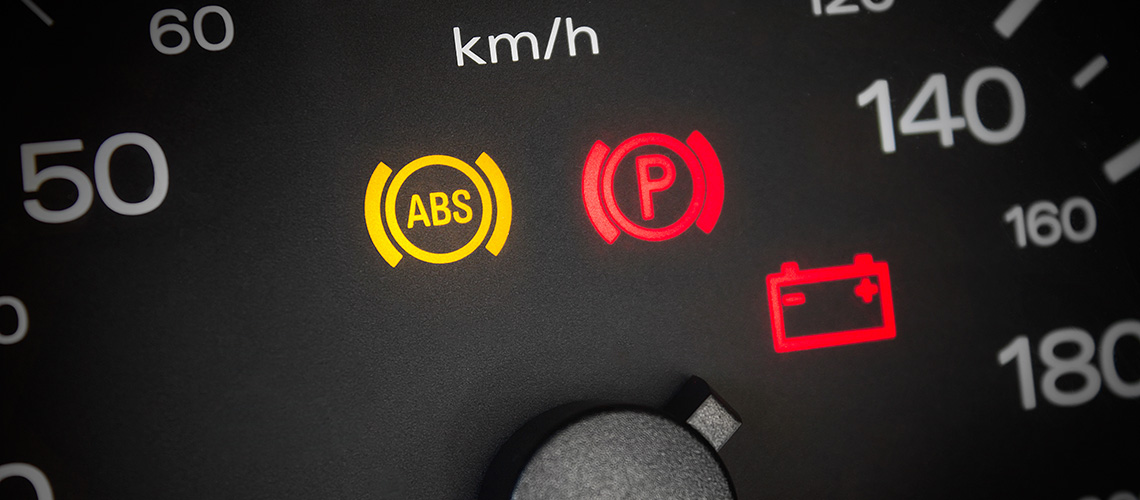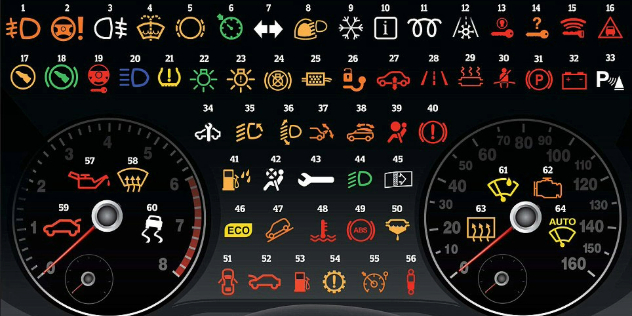
You could be forgiven for thinking you’re behind the yoke of a Boeing airliner when settling into the driver’s seat of a modern car.
Myriad electronic systems, new safety and driver aids, and the advent of digital instrument clusters make for a spectrum of different colours immediately ahead of the driver. Question is, what do all these colours and icons on your dashboard mean?
As a rule, there are two main types of dashboard warning lights: red and orange. If either of these appears on your dashboard, it is usually your vehicle’s way of communicating an issue. Ignoring warning lights can turn a relatively minor problem into a big, expensive and potentially dangerous one.
A red warning light generally indicates a serious issue with your car. You should act quickly if your dashboard warning light is red – it could be an overheating engine, low engine oil pressure, or a problem with the braking system.
In some modern cars, the presence of certain red lights will coincide with the vehicle going into ‘limp mode’, which can limit the vehicle’s top speed or its operating parameters in a bid to minimise damage and/or danger.
An orange dashboard warning light means the engine management system – the computer that runs the engine – has detected a fault. As a rule, you may continue to drive a car with an orange dashboard warning light, but you should head to your local service centre for diagnosis and repair as soon as possible.
It is important to pay attention to car dashboard warning lights because they can help you avoid a breakdown, keep you safe on the road, and potentially save you an expensive repair bill.
If a red or orange warning light appears on your dashboard, do not ignore it. Instead, pull over somewhere safe and look up what it means in the owner’s manual. If you are not sure what the problem is, ask a qualified mechanic or vehicle manufacturer for advice.
If a light momentarily illuminates then disappears, there may not be a problem, but it is a good idea to get it checked out by a mechanic for peace of mind.
The dashboard warning light landscape is constantly changing, particularly with the advent of modern technologies and more EVs on Australian roads than ever before.
Below is a guide to the warning lights featured in most modern cars, dating back to the advent of electronic ignition systems and on-board diagnostic systems which monitor vital engine components. Happily, many of these codes will also relate the vehicles which predate those technologies, too.

Fog light (front)
Power steering warning light
Fog light (rear)
Washer fluid low
Brake pad warning
Cruise control on
Direction indicators
Rain and light sensor
Winter mode
Information indicator
Glow plug/diesel pre-heat warning
Frost warning
Ignition switch warning
Key not in vehicle
Key fob battery low
Distance warning
Press clutch pedal
Press brake pedal
Steering lock warning
Main beam headlights
Tyre pressure low
Sidelight information
Exterior light fault
Brake lights warning
Diesel particulate filter warning
Trailer tow hitch warning
Air suspension warning
Lane departure warning
Catalytic converter warning
Seat belt not on
Parking brake light
Battery/alternator warning
Parking assist
Service required
Adaptive lighting
Headlight range control
Rear spoiler warning
Convertible roof warning
Airbag warning
Handbrake warning
Water in filter
Airbag deactivated
Fault problem
Dipped beam headlights
Dirty air filter
Eco driving indicator
Hill descent control
Temperature warning
ABS warning
Fuel filter warning
Door open
Bonnet open
Low fuel
Automatic gearbox warning
Speed limiter
Suspension dampers
Oil pressure low
Windscreen defrost
Boot open
Stability control off
Rain sensor
Engine/emissions warning
Rear window defrost
Auto windscreen wiping
Stay safe on the roads and catch any issues as soon as possible. If you are unsure, it’s always safer to ask a professional.
While DIY engine code scanners are available, simply removing persistent dashboard warning lights only treats the symptom and not the cause. Your car has been built with sensors to identify faults that range from mild to potentially catastrophic, so if you find a dashboard warning light keeps returning, it is likely indicative of a larger problem.
Quite often, these issues are most easily remedied with the help of a qualified technician, who will plug into your car with a special diagnostic tool to fix and then clear the engine code. It is not recommended to simply reset the warning light yourself.